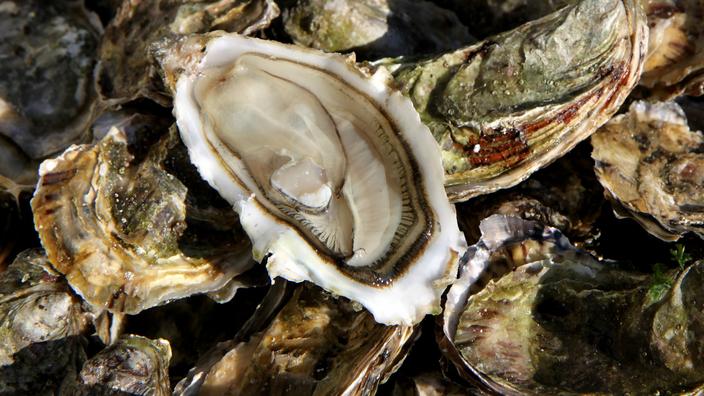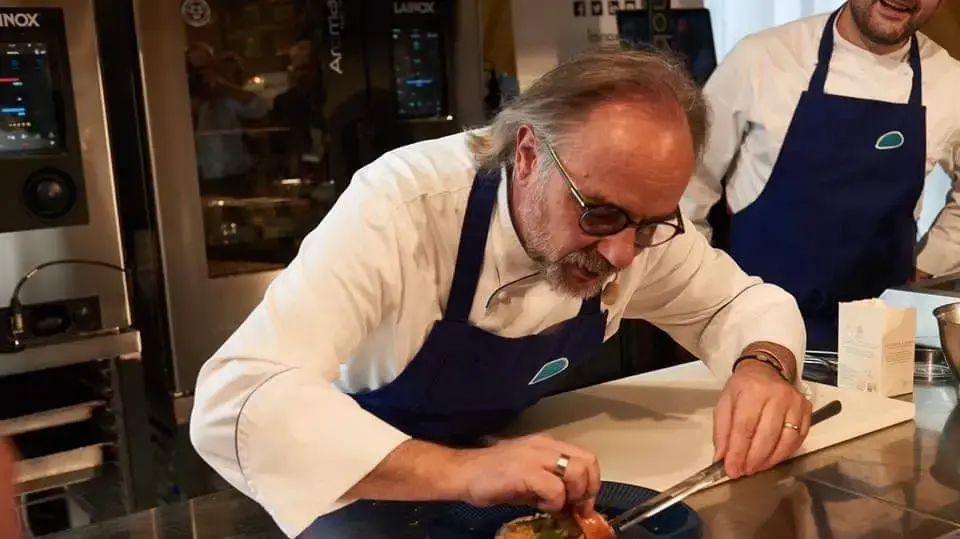This is one of the technical tests of the end of year celebrations: opening the oysters without damaging them.
And the exercise can be dangerous, since no less than 2,000 people are injured in this way each year, according to the health watch institute.
These accidents, almost a third of which occur between December 24 and January 1, are not always mild: 7% of cases require an emergency room.
To discover
SIMULATOR - Are you getting paid well?
Read alsoThe oyster, star of the festive tables
This is due to the adductor muscle of oysters, which allows them to press the two parts of the shell against each other.
This one is able to withstand a force of three kilos.
In the hope of cutting this Gordian knot, many processes have emerged.
If we immediately think of the classic oyster knife and chain mail glove, it is only one element among others in the vast arsenal designed to facilitate delicate handling.
Grinding wheel and edible wax
Most of these weapons have not reached posterity.
Like the special oyster vibrating blade knife, the first model of which saw the light of day in 1979, marketed in particular by Tefal.
Or this process imagined in 1992 by a company in Finistère which consists of opening the oysters with a millstone and recapping them with edible wax before sending them to the fishmongers' stalls.
Individuals would just have to remove the wax with a good old kitchen knife before feasting.
But oysters are, alas, devious animals that do what they want.
Indeed, they open on their own regularly, which then had the effect of loosening the wax.
The ingenious idea fell through.
Special oyster vibrating tear knife.
Tefal
Then it was Yves Renaut's turn, a forty-year-old resident of Rennes, to come up with a solution. This electromechanical engineer, then unemployed for two years, has the idea of winding a stainless steel wire, like a ring, around the problematic muscle. By pulling on the thread, the muscle is severed and the shell opens. In addition to making it easier for consumers to open, a plastic tab can be attached to the wire, allowing the oyster farmer to specify the origin of the oyster. Yves Renaut patented his “
ring
” on January 27, 1995 and, on August 4, 1995, granted an operating license to the SRC (Comité Régional de Conchyculture) of northern Brittany.
The oysters are first immersed by the oyster farmers in a saline solution in order to make them naturally open, then are ringed before shipment to retailers. At first, his idea allowed Yves Renaut to dream of prosperous business: he became commercial director of Read, a Vendée company which sold labels for thirty cents to the SRC de Bretagne Nord. But banding can only be done manually, which reduces the competitiveness of the product. Above all, a legal war between Yves Renaut and the SRC will break out, the former seeking to recover the operating license granted to the latter on the grounds that the latter is seeking to torpedo the process. Decidedly, the oyster gives a hard time.
The wire must make it possible to cut the adductor muscle of the oyster.
Magic Oyster
World Consecration
Despite everything, some persist and come up with new ideas.
Like Michel Lannay, a septuagenarian from Pontivy, in Morbihan, who invented the Ouv'huitre, in 1995. It is a wooden base, equipped with a handle and a mower section.
Enough to overcome even the most recalcitrant mollusk!
The shell is stuck in the base, then a sharp blow of the blade opens it without damaging it.
In 2005, it was the consecration for the oyster which received the gold medal at the World Inventors Competition in Geneva.
Several thousand copies have since been sold.
The oyster won the gold medal at the World Inventors Competition in Geneva in 2005. Michel Lannay
In 1998, Serge and Pascale Di Giulio, two inhabitants of Saint-Jean de Monts, in Vendée, launched an oyster clamp, which they called “
Ostra
” in reference to Latin etymology. This clamp is equipped with a shell breaker to break the end of the oyster and create an opening. It is then necessary to return the spatula integrated in the forceps, and provided with small teeth, through the opening in order to cut the adductor muscle. Finally, the pliers allow the shell to be removed. Pascale and Serge were proud to present their pliers to the Lépine competition, a French competition for inventions. "
We are in the book of inventions 1998
" even welcomes Pascale. From the economic point of view, too, there is success. "
We manage to make a living from it
She exclaims.
What will the Di Giulios eat on New Year's Eve?
“
Oysters, of course, but hot!
I don't like when they are raw.
Prepared with sabayon or leeks, it's very good,
”explains the Vendee.
The Ostra Di Giulio Di Giulio Ostra oyster tongs
To those whom these inventions cannot convince, do not ban the mollusk for all that!
This year, Picard, the king of frozen foods, did not hesitate to offer oysters in his stores that open once thawed.
A sacrilege?
It's up to you ... Others, finally, can ask their fishmonger to open them for them.
Enjoy your lunch !








